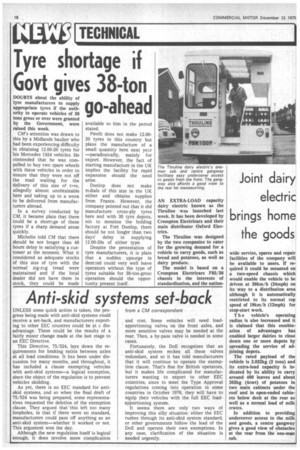Anti-skid systems set-back
Page 20

If you've noticed an error in this article please click here to report it so we can fix it.
from a CM correspondent
UNLESS some quick action is taken, the progress being made with anti-skid systems could receive a set-back, and manufacturers exporting to other EEC countres could be at a disadvantage. These could be the results of a fairly minor change made at the last stage to an EEC Directive.
This Directive, 75/524, lays down the requirements for braking ratios between axles at all load conditions. It has been under discussion for many months, and throughout, it has included a clause exempting vehicles with anti-skid systems—a logical exemption, since the object of the regulation is to prevent vehicles skidding.
As yet, there is no EEC standard for antiskid systems, and so when the final draft of 75/524 was being prepared, some representatives requested the deletion of the exemption clause. They argued that thisleft too many loopholes, in that if there were no standard, manufacturers could pass off anything as an anti-skid system—whether it worked or not. This argument won the day.
Although the new regulation itself is logical enough, it does involve more complication and cost. Some vehicles will need loadapportioning valves on the front axles, and more sensitive valves may be needed at the rear. Then, a by-pass valve is needed in some cases.
Fortunately, the DoE recognises that an anti-skid system makes all these valves redundant, and so it has told manufacturers that it will continue to operate the exemption clause. That's fine for British operators, but it makes life complicated for manufacturers wanting to export to other EEC countries, since to meet the Type Approval regulations coming into operation in some countries in October 1976, they will have to equip their vehicles with the full EEC loadapportioning system.
It seems there are only two ways of improving this silly situation: either the EEC rushes through its anti-skid system standard, or other governments follow the lead of the DoE and operate their own exemptions. In any case, clarification of the situation is needed urgently.














































































